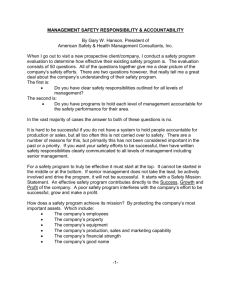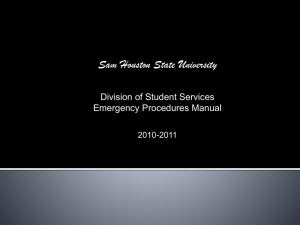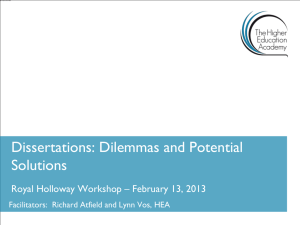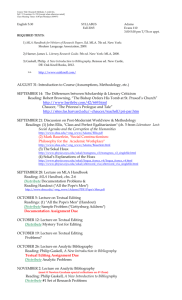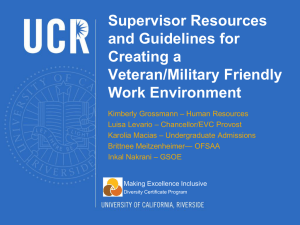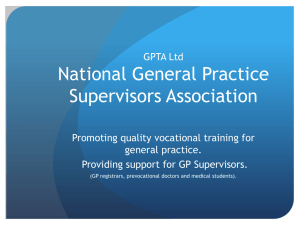PowerPoint - Sam Houston State University
advertisement
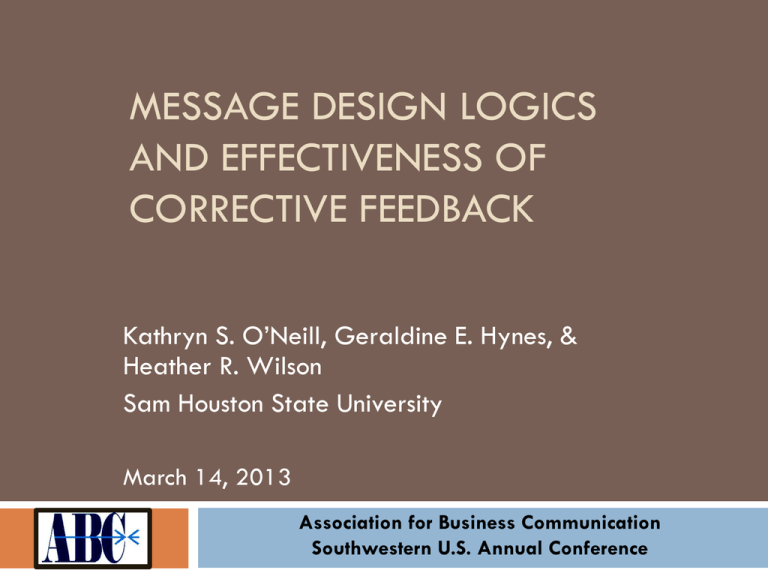
MESSAGE DESIGN LOGICS AND EFFECTIVENESS OF CORRECTIVE FEEDBACK Kathryn S. O’Neill, Geraldine E. Hynes, & Heather R. Wilson Sam Houston State University March 14, 2013 Association for Business Communication Southwestern U.S. Annual Conference Background Organizations spent $133.4 billion in 2011 to train employees (ASTD, State of the Industry Report, 2012) 12.6% is for training managers and supervisors 7.9% is for training in interpersonal skills Premise: Skilled communicators of corrective feedback improve employee performance and productivity Agenda Theoretical Framework Purpose Methodology Results Discussion and Implications Theoretical Framework O’Keefe and McCornack (1987) Asked why some communication situations elicit wide variation in messages’ content and effectiveness O’Keefe’s (1988) Theory of Message Design Logics Suggested messages are designed according to three fundamental premises in ends-to-means reasoning about communication Expressive Fundamental Premise: Language is a medium for expressing thoughts and feelings Example: “You have not done your share of the group’s work. I am going to have to remove you from the group. I know you have done some work, though. Can you bring it to my house so I can use it? Maybe I can salvage something from this situation.” Conventional Fundamental Premise: Communication is a game played cooperatively by social rules Example: “I am going to have to ask you to rewrite this report. The things I want you to do are listed on this page of comments. Please turn the work around as quickly as possible.” Rhetorical Fundamental Premise: Communication is the creation and negotiation of social selves and situations Example: “Things have gone well on our project, and we have another whole day before it must go to the typist. Your part was good, but I think it could be strengthened with some minor additions. What would really help is some statistical support. I bet a couple of hours at the library would do the trick. I know you are as eager as the rest of us to get a good grade, and I think the investment of a little more time would really pay off. What do you say?” Purpose Apply O’Keefe’s theory To the workplace To interactions between supervisors and their subordinates Research Methods Pilot study: collected messages in response to a typical corrective feedback situation Sample: 14 Supervisors in communication training program Task: To deliver corrective feedback to a chronically tardy employee Procedure: Supervisors wrote what they would say to their employee Analysis: Authors used a rubric to analyze each message independently Came to consensus for each message Results: Distribution of Message Types 21% of the sample composed Rhetorical messages 64% composed Conventional messages 14% composed Expressive messages Results: Experience And Message Type Message Type Years of Experience Rhetorical 5 - 20 Conventional 1 - 12 Expressive 1, unk. Discussion Theory is supported in workplace settings Developmental aspect of the theory is supported Theory supports a strategy of formal training for supervisory communication skills Case-based exercises may be a valuable tool for predicting supervisors’ communication skill level Next Steps Expand study to include supervisors in multiple industry settings Expand study to consider more demographic factors Test perceived effectiveness of message design logics Thank you! Kathryn O’Neill <oneill@shsu.edu> Gerry Hynes <hynes@shsu.edu> Heather Wilson <hrw004@shsu.edu> PowerPoint <www.shsu.edu/~gba_geh>
